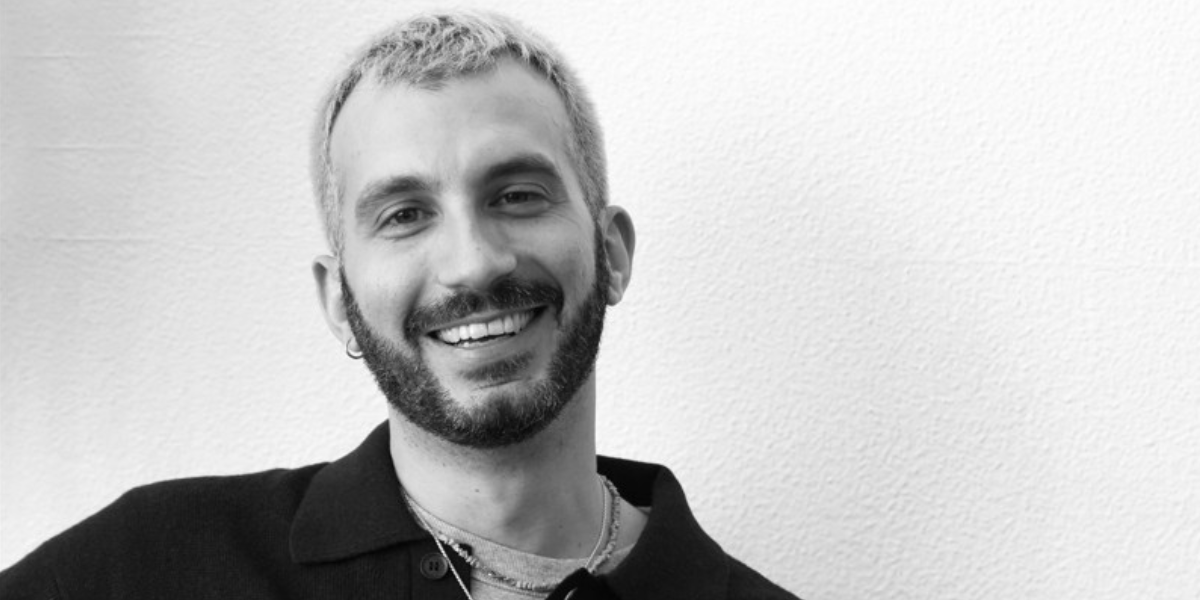Introduce yourself and tell us about your story and what you did today at Ferrari Fashion School.
I am Andrea Bandiera, and I am the Senior Recruitment and Creative Manager at Lagente, an agency based in Milan that has been representing fashion designers and guiding them in their professional journey since 1994. I have been working for Lagente for almost 10 years. Before this experience, I handled productions for editorials and wrote articles focused on fashion and culture for the independent magazine RedMilk. Since 2012, I have been a journalist and recently became the Editorial Director of STELLAPubblication. Today, I met with a selection of third-year students at Ferrari Fashion School for a portfolio review session.
How would you define a good portfolio for a young designer?
I believe there are some key points to follow, such as having an organized structure that is immediately readable for the viewer, making good use of white space and fonts, having a good selection of high-resolution images, and presenting an in-depth visual research. The portfolio should best tell the creative process followed by the designer, so it is important to document all the steps taken, including fitting moments (when possible) and various design methods.
What elements do you consider essential to impress you?
Curiosity and creative hunger.
What characteristics and skills do you look for in young talents aspiring to creative roles?
The ability to translate one’s thoughts and make them available to any interlocutor. When you start from something personal, abstract, from a vision, and suddenly all this is manifested through volumes, shapes, and materials. Almost obsessive attention to detail… you should never take anything for granted. The ability to be, to do, and to stay in space. Research and how it is carried out are equally important characteristics. Moreover, today I would say that the ability to be sustainable is essential, each in their own way and with their own possibilities. I think it is impossible not to consider this aspect because it would mean not being a child of your time.
What advice would you give to third-year fashion design students to stand out in today’s competitive market?
Carefully study existing realities, whether you want to gain experience in a company (a necessary and fundamental step in my opinion) or launch your own personal project. You need to know data, numbers, and industry professionals to interact with this industry. It is essential to go to stores, touch the products, study the construction of the garments, and recognize their strengths and areas for improvement. It is important to ask questions to sales staff to understand how the market is doing and to better understand the customer. It is important to enrich your education with content not solely related to the fashion world; you need to expand your horizons through research, which should not be limited only to the digital sphere but should also have feedback outside of it. For this reason, it is important to observe places and people, to see how they interact with the external and internal world. It is important to engage with your colleagues, listen to different points of view, and share generously with them, because only in this way will you have the space to receive. Moreover, last but not least, never stop being curious, looking for unexpected cross-connections, and encouraging encounters to make your voice heard and assert your vision.
How do you believe international culture and experiences can influence the growth and development of an emerging designer?
International experiences are very important. The comparison with different cultures is necessary to enrich one’s vision with new nuances and experiment with new techniques and languages that will definitely be useful for design purposes.
How do you think the personal creativity of a young designer can stand out in today’s competitive market?
I believe that the creativity of a young designer has the opportunity to emerge in today’s market when there is a clear, precise, and authentic vision. When the project is strongly felt by the designer, when it clearly expresses their identity. Of course, this vision will necessarily have to deal with contemporaneity and market logic, with the data and numbers I mentioned earlier. Dealing with these details does not mean brutally compromising; it means finding your place in the world by doing something you love and that, to be successful, must necessarily find a resonance. Certainly not an easy task.
What is the value of expressing one’s creative identity in the portfolio?
The ability to leave a mark and be remembered for your personal point of view. This does not necessarily mean doing crazy things; it means having a clear and precise vision. Having an idea of the client, a reference market, having built a world and an imagery around your creativity. It is not necessary to make a lot of noise, especially in a time like this. You can also speak softly, but be remembered for the form and things you say, this also applies when making clothes.






